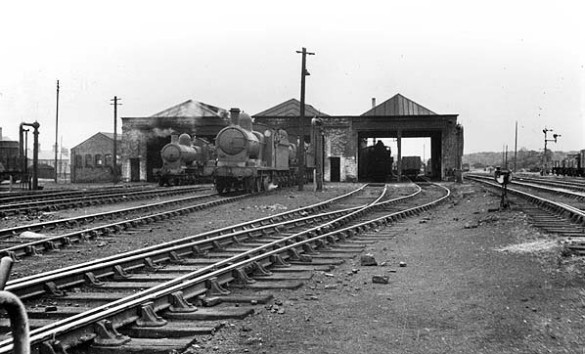 Oswestry Locomotive Shed looking north-east in 1948.
Oswestry Locomotive Shed looking north-east in 1948.
Photo from the John Mann collection
|
Oswestry locomotive depot was originally built by the Oswestry and Newtown Railway as a 4 road dead-ended shed, with a twin hipped slate roof. The building was 67x200ft, and was built to the north east of the station, just south of Whittington Road in a fork between the Gobowen branch and the Whitchurch main line. It was to become an important part of the railway system throughout the life of the line.
In 1864, the company amalgamated with the Oswestry, Ellesmere and Whitchurch Railway, the Newtown and Machynlleth Railway, and the Llanidloes and Newtown Railway to form the Cambrian Railway Company. The Aberystwyth and Welsh Coast Railway was absorbed by the Cambrian in 1865.
The shed facilities included a 45ft turntable and a coaling stage constructed of brick and timber.
At the beginning of the twentieth century, the shed was extended with the addition of a shorter two road building, 50x125ft long. It was the largest loco depot on the Cambrian Railway system.
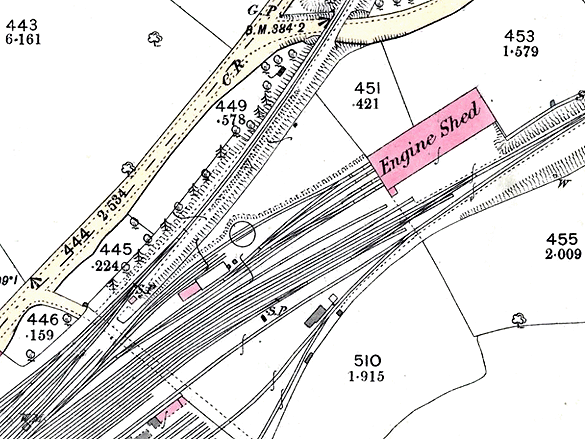 Oswestry Locomotive Shed shown on a 25-inch scale map from 1874.
Oswestry Locomotive Shed shown on a 25-inch scale map from 1874.
|
In 1929 the GWR improved facilities at Oswestry by adding electric lighting to the entire complex, extra inspection pits and a GWR standard-pattern single-ramp coaling stage. A 45,000-gallon water tank was also added, and a new, hand operated, 65ft diameter table replaced the original 45ft facility. Other facilities added around this period included new offices workshops stores and a sand drying furnace. Later, in 1949, the wooden roof was replaced with steel trusses, allowing the introduction of improved clearances, increased ventilation and additional glass shuttering.
An administrative oddity occurred throughout the period of control by the GWR, in that an ex-LNWR engine was stabled but not allocated to Oswestry shed from 1923, only attached to the shed after 1946 when the UK railway system was nationalised under British Railways.
The Cambrian had used smaller locos for passenger workings, and it wasn’t until World War 2 that larger 4-6-0 locos were transferred to Oswestry, in the form of the Manor class, which were fairly new, the first having been built in 1938. They were around 5 tons lighter than earlier 2-6-0 classes, giving them a wider route availability.
Locomotive Allocation 1950
Cambrian Railway 0-6-0
844 |
855 |
887 |
895 |
849 |
873 |
893 |
896 |
Class 14xx 0-4-2
1412 |
1432 |
5803 |
5812 |
1428 |
1459 |
5806 |
|
Class 16xx 0-6-0PT
Class 2021 0-6-0PT
Class 2251 0-6-0
Class 2301 0-6-0
2327 |
2408 |
2482 |
2516 |
2556 |
2354 |
2409 |
2483 |
2538 |
2572 |
2386 |
2449 |
2484 |
2543 |
|
Class 74xx 0-6-0PT
Manor Class 4-6-0
7807 Compton Manor |
7808 Cookham Manor |
7819 Hinton Manor |
Class 81xx 2-6-2
Class 90xx 4-4-0
9001 |
9016 |
9022 |
9028 |
9003 |
9020 |
9026 |
|
Duke Class 4-4-0
Total allocation 53. (Source of information - BR Steam Motive Power Depots WR. Paul Bolger)
By the early 1950s, some of the older small locos were in need of replacing, and Swindon produced a batch of right hand drive LMS Ivatt 2-6-0s in 1952. After carrying out evaluation trials on the Cambrian network, they became an obvious choice. A snapshot of loco allocation to Oswestry in 1959 included fifteen of these class 2 moguls at the depot.
Such was the importance of Oswestry MPD, that even in its final years it retained an allocation of around 30 locomotives, and 100 enginemen.
After closure, in January 1965, the bulk of Oswestry’s loco allocation was moved to Croes Newydd 6C, and Shrewsbury 6D.
Shed code numbers.
The original shed code for Oswestry was 129, but under Great Western ownership it was given the code OSW. Following nationalisation of the railways, the loco depot was coded 89A from 1949 until 1960, when it was then re-coded to 89D. In September 1963 it was re-coded 6E, a sub shed of Chester, when it became part of the London Midland Region, until its closure in January 1965. There were originally five sub sheds to Oswestry, which included Llanfylin (closed in 1952), Llanidloes (closed in 1962), Moat Lane (closed in 1962), Welshpool narrow gauge (closed in 1956), and Whitchurch which outlasted Oswestry, closing in 1966.
See also: Oswestry Cambrian Works, Oswestry North Junction
and Oswestry (Cambrian) station
|

old24.jpg)


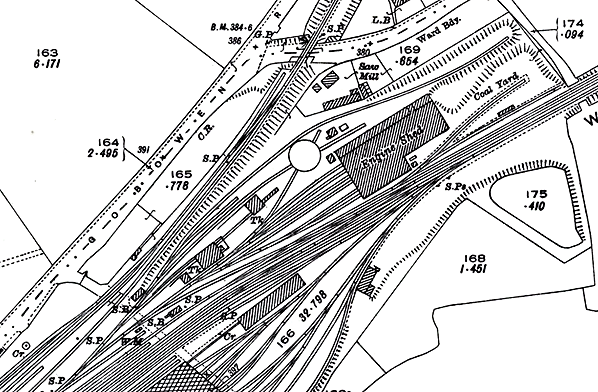
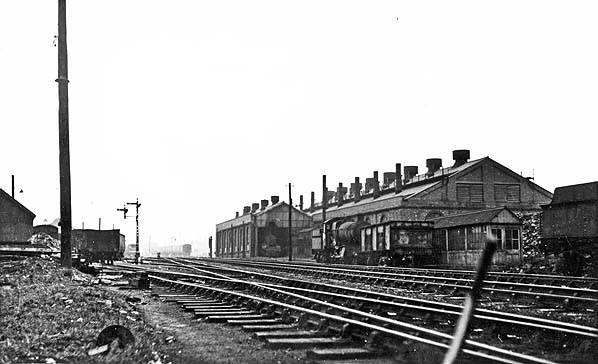
old27.jpg) Oswestry shed seen looking south from the turntable in the early 1960s.
Oswestry shed seen looking south from the turntable in the early 1960s.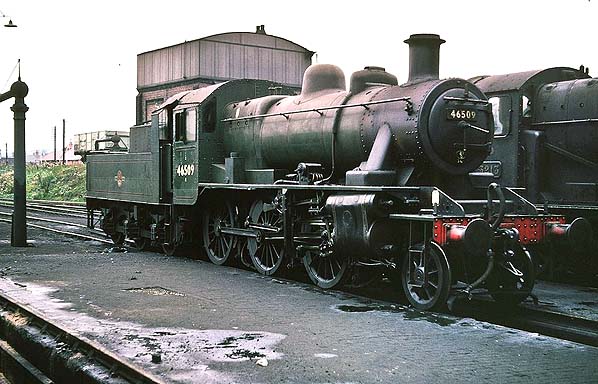

 Home Page
Home Page